#Le foto di Gioia (1987)
Explore tagged Tumblr posts
Text
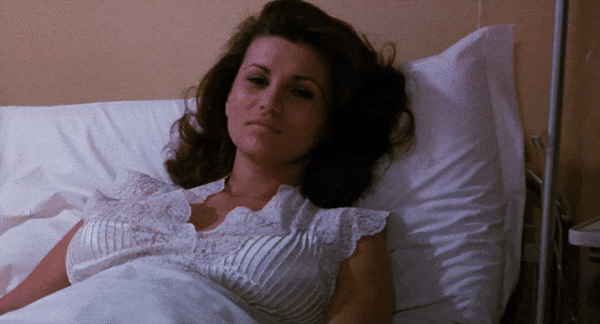
Le foto di Gioia (1987)
48 notes
·
View notes
Photo

Le foto di Gioia (1987) Serena Grandi
59 notes
·
View notes
Video
youtube
Movie Special - Sabrina Salerno - Delirium/Le Foto di Gioia (1987) (Simo...
1 note
·
View note
Photo

Le foto di Gioia (1987)
124 notes
·
View notes
Text
Delirium (1987) (AKA Le foto di Gioia)

Directed by Lamberto Bava
Screenplay by Gianfranco Clerici and Daniele Stroppa
Story by Luciano Martino
Music by Simon Boswell
Country: Italy
Running Time: 93 minutes
CAST
Serena Grandi as Gloria
Daria Nicolodi as Evelyn
Vanni Corbellini as Tony
David Brandon as Roberto
George Eastman as Alex
Katrine Michelsen as Kim
Karl Zinny as Mark
Lino Salemme as Inspector Corsi
Sabrina Salerno as Sabrina
Capucine as Flora
delirium /dɪˈlɪrɪəm/ noun 1) an acutely disturbed state of mind characterized by restlessness, illusions, and incoherence, occurring in intoxication, fever, and other disorders. 2) a 1987 Italian giallo erotic horror film directed by Lamberto Bava characterized by illusions, incoherence, boobs and dismal 1980s pop “star” Sabrina being stung to death while buck nekkid except for a very poor bee mask.
(Guilt Belch: The print of Delirium I streamed was atrocious. So I have had to nick pics off IMDB. Thanks, Prime.)
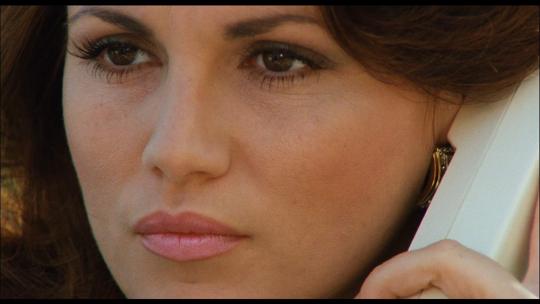
Delirium is a terrible but worryingly enjoyable (very) late entry in the Italian giallo cycle. It is also a frighteningly prophetic movie. While it retains enough of the hallmarks of its Italian genre forbears to remain identifiably a giallo, Delirium also clearly points to the forthcoming cultural nightmare of the American cable TV style “erotic thrillers” of the 1990s, which in retrospect were neither erotic nor thrilling. These dismal American exercises in coy peekaboo tedium all starred Shannon Tweed and were about as erotic as sorting the recycling in the rain. They possessed plots so featureless they might in fact all have been the same movie, just edited differently and given a different title (Animal Longings, Nocturnal Emissions, Nocturnal Longings, Animal Emissions, Nocturnal Animals, oh wait…). I don’t know much about them beyond that because I was busy playing Quake and they were, well, dull; Delirium is anything but dull. Delirium is ridiculous, misogynistic, stupid, and on at least two occasions astoundingly Guinness Book of Records level nuts, but it is rarely ever dull. Delirium is either better than you think or worse than you think, or both. Whatever, it’s definitely something.

Gloria (Serena Grandi; chesty) is an ex-“glamour” model who has used the money from her husband’s recent death to empower herself by moving into publishing. In a strikingly feminist move Gloria has chosen to publish the same kind of glossy booberama she used to appear in; it’s called Pussycat, because classy never goes out of fashion. Her next door neighbour is Mark (Karl Zinny; overwrought), a young man confined to a wheelchair after a car accident in which his fiancé died. He peeps on the Pussycat photoshoots Gloria stages poolside, and frequently rings Gloria up to tell her how hard she makes him and how much he wants to “invade her flower”, because contrary to reports romance isn’t dead. Kim (Katrine Michelsen; expendable), Gloria’s friend is, however, very dead; stabbed by a pitchfork in front of Mark’s creepy peepers. Gloria thinks Mark’s having her on since no body is found, but then photos arrive showing Kim’s corpse posed in front of a blown up photo of Gloria’s chest, and when Kim herself turns up in a skip Inspector Corsi (Lino Salemme; macho) is called in to look virile and get everything wrong.

Delirium being a giallo first and a cinematic spank mag second, the dead bodies accumulate faster than the glimpses of skin, and almost as fast as the red herrings. Basically, the race is on to unmask the killer before everybody in the movie is dead. Mark saw the killer had long blonde hair so is the killer Gloria’s blonde haired assistant Evelyn (Daria Nicolodi; too good for this)? But Kim was posed in front of an old photoshoot only Roberto (David Brandon; again, too good for this) has access to, so it must be him right? Yet Roberto claims the negatives were stolen, so maybe it’s Flora (Capucine; think an evil Sybil Danning) who is trying to wrest the magazine from Gloria, who Flora feels owes her one since she saved Gloria and her brother from “the street”. Or maybe it’s Gloria’s brother Tony (Vanni Corbellini) who can’t get it up for ‘80s pop footnote Sabrina? Gloria bumps into an old flame, Alex (George Eastman; rugged), who can get it up, as we see in a scene where he humps Gloria’s thigh in the bath while she shakes about a bit, but Alex proves elusive after his comeback hump so maybe it’s him? There are so many suspects I even forgot to mention Mark, but then he can’t walk, so it can’t be him. Or can he, so can it? Or something?
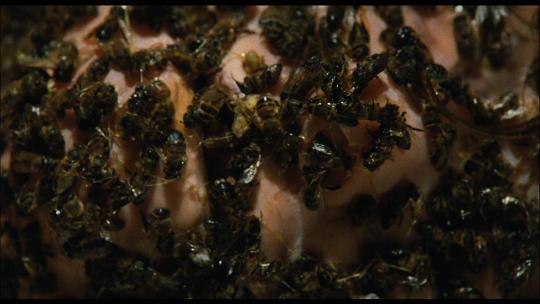
Delirium’s mystery is enjoyably daft, and despite the flat lighting, terrible music and capable but unadventurous direction you will find yourself trying to guess who the killer is, as though you are watching something that actually might make sense. This is the fundamental magic of giallo; it tramples the boundaries of sanity so enchantingly that to not go along with it would leave you feeling like a sour faced party pooper. Delirium is trash, yes; but it’s magnificently, unapologetically trashy. Now, you can either take my word on that and watch the movie and have your mind blown harder than a sailor on shore leave, or you can read on where there be SPOILERS for the twin trash highpoints of Delirium.

For connoisseurs of the bizarre there are two great reasons to watch Delirium, and no, that’s not a set up for a very poor joke about the physical talents of the well upholstered star Serena Grandi. At one point Kim, smoking by a swimming pool, without any whiff of warning, inexplicably and suddenly has a face like a giant eyeball in a wig. The fact she is promptly pitchforked to death is just the icing on the, uh, eyeball. (Eventually you figure out that this eyeball faced lady is what the killer sees in the grip of their…(ta dah!) delirium, but I’m pretty sure the movie never explicitly explains it. Which is either lazy or brave; you decide.) This scene alone is all kinds of amazing, so much so that I feared Delirium had peaked early (like Tony; Boom! Boom!), but luckily even the pitchfork murder of an eyeball faced woman is not ridiculous enough for Delirium. No, Delirium also has a scene where 1980s pop warbler Sabrina is stung to death by bees in her own apartment while wearing only an unconvincing bee mask. This latter scene goes on at eye glazing length. It’s sobering to realise how quickly the human mind can become bored by the sight of a 1980s pop shouter being stung to death while wearing only a very poor bee mask. Unless of course you have a fetish for 1980s pop nonentities being stung to death while wearing only a very poor bee mask, in which case you might want to marry this movie. I’m certainly not judging you; it’s a big world. And Delirium is big, guilty fun.
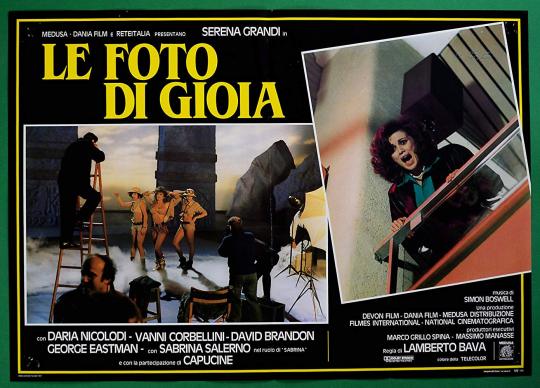
#Movies#Giallo#Delirium#The 1980s#1987#Italy#Lamberto Bava#Serena Grandi#Capucine#Sabrina#Sabrina Salerno#Daria Nicolodi#David Brandon#Le foto di Gioia
18 notes
·
View notes
Text
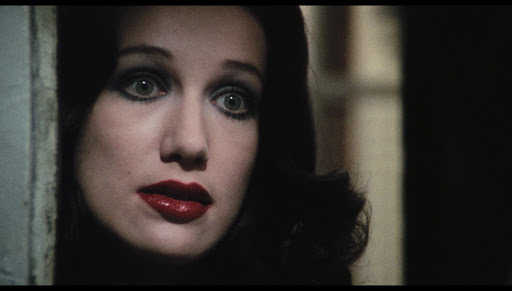
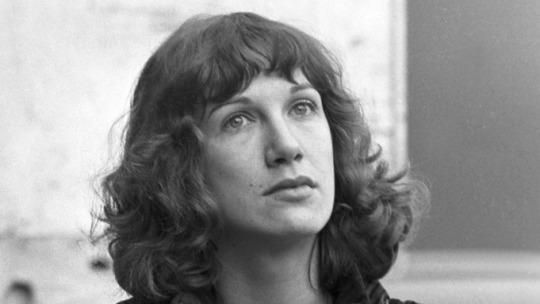
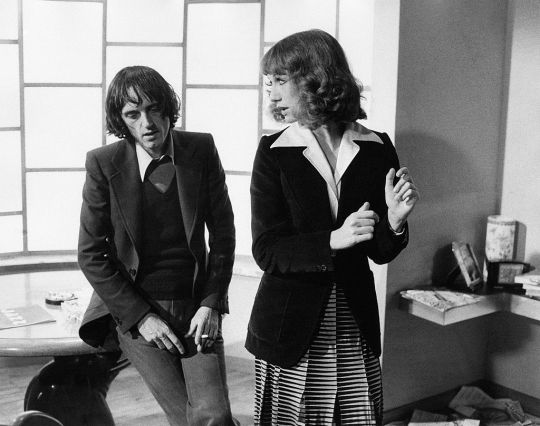
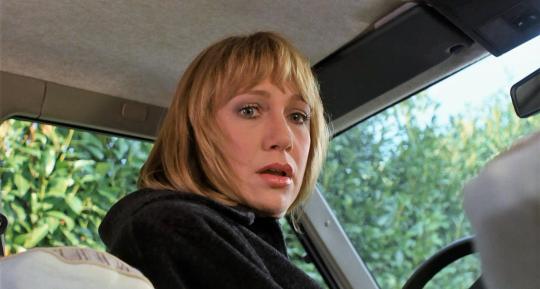
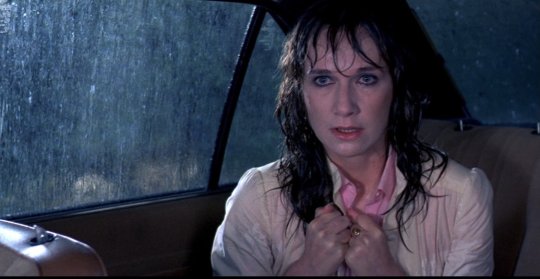
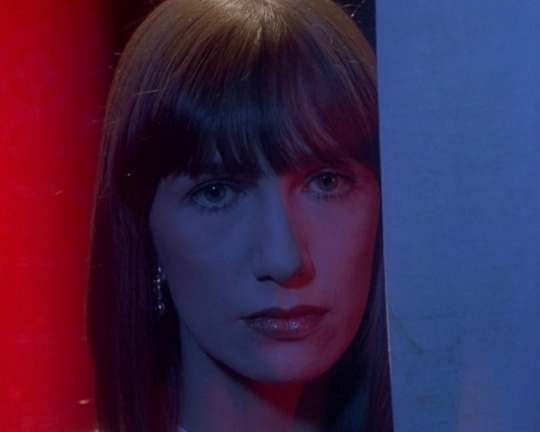
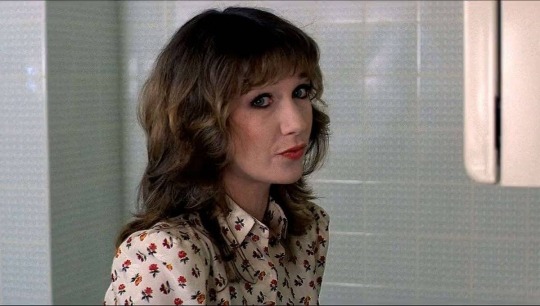
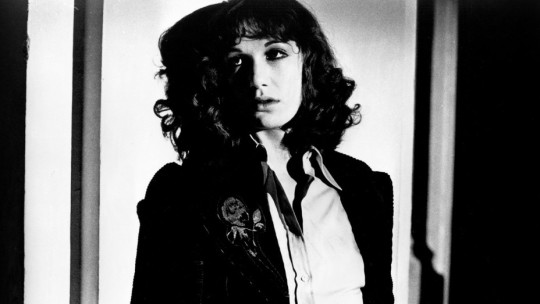
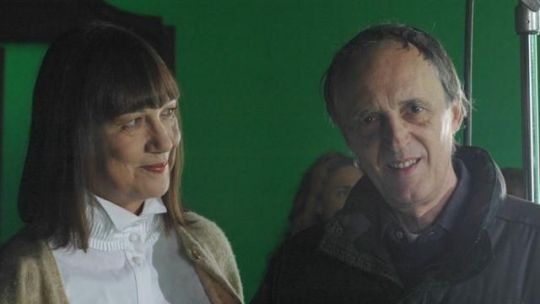

RIP Daria Nicolodi (19.6.1950 – 26.11.2020)
"I grew up in a house that was like a library or a museum. I feel I refined Dario's taste very much. I went with him to many art exhibitions. [...] I feel I guided Dario to something outside the scope of just cinema, towards art, music, theatre, and other things."
"For me, I did not want to be a star; I just wanted to act well."
A true icon of the silver screen, and one of the most significant figures in Italian genre cinema of the 20th Century. Daria was born in Florence, in 1950, into a talented family of intellectuals and artists: her father was a lawyer, her mother an academic; her maternal grandfather was Alfredo Casella, a composer and conductor who counted Stravinsky, Mahler and Strauss among his friends.
Daria moved to Rome while still a teen, and by 1970 she was beginning to find work on stage and screen. Elio Petri was quick to spot her talent, guiding her through her first theatrical roles, and ultimately casting her as the female lead in La proprietà non è più un furto (Property Is No Longer a Theft, 1973), a highly political satire about wealth and class in modern Italy. The following year, she attended auditions for Profondo Rosso (Deep Red), where she met director Dario Argento. Until this point, she had mostly played attractive blondes and love interests; Argento could see that she was capable of more nuance, and had her cut her long hair and dye it red, adopt a more masculine style of dress, and bring her wry sense of humour to the character of Gianna. In return, Daria adopted some of the director's mannerisms and habits for her character, particularly in her physical movements and hand gestures. The two worked well together, on screen and off; they soon became romantically involved, and in 1975 Daria gave birth to a daughter, Asia Argento (her second, having previously had a child with sculptor Mario Ceroli).
Daria and Dario would remain together for the next ten years. In the process she became not only his partner, but his closest collaborator, and in many ways his muse. Before Asia was born, the two took a holiday in northern Europe, travelling around France, Germany and Switzerland. The trip reminded Daria of her grandmother - another artist, the French pianist Yvonne Müller Loeb Casella - who had a keen interest in the supernatural, and thrilled the young Nicolodi with tales of her time at an academy on the Swiss/German border, where the faculty had all practised black magic. Those stories would form the basic outline of Argento's next film, Suspiria (1977). The couple developed the idea between them, and worked together on the script, incorporating everything from fairy tales to Nicolodi's dreams. In later years, Argento would downplay the contribution made by Daria to the finished script, but her influence - and in turn, the way Suspiria would influence the entire horror genre, and develop Argento's work - is undeniable. Her fight for official recognition - and a screen credit as co-writer - left the actor exhausted.
Daria had also intended to act in the film, but was prevented by injury. She returned for Inferno (1980), the spiritual sequel to Suspiria, and once again contributed behind the cameras: the original concept was Nicolodi's, and she worked on the script with Dario. Unwilling to fight him again, her writing work went uncredited this time. With their professional relationship strained, Nicolodi would only agree to a small supporting role in Argento's next film, Tenebre (Tenebrae, 1982). However, when the American actor who had been cast as the female lead dropped out just before the start of shooting, Daria once again found herself starring in an Argento horror film. The shoot was not a happy one; as Daria bonded with her onscreen love interest, Anthony Franciosa, over a shared passion for theatre, Argento became jealous and difficult. The atmosphere on set deteriorated to such a point that, when directed to give a short, sharp scream for the final shot of the film (her final day of shooting), Daria instead unleashed a long, deafening howl of terror. What she described as her "cathartic release from the whole nightmare" would become one of the most iconic moments in the film.
By the time they were making Phenomena (Creepers, 1985), the relationship between Nicolodi and Argento was beginning to fail. They would separate that year, and although she initially did not express any interest in working for the director again, she was tempted back for Opera (1987) by an elaborate death scene. Outside of her work with Dario, Nicolodi had built up a modest but significant filmography with other big names in Italian genre cinema. For the great Mario Bava, she starred in his final film, Shock (1977); for his son, Lamberto, she took a supporting role in Le foto di Gioia (Delirium, 1987). Michele Soavi, a protégé of her former partner, cast her in La Setta (The Sect, 1991), but mainly she would concentrate on the stage from this point on, describing theatre as her first love. The tragic death of her elder daughter, Anna, in 1994, only kept her further away from the limelight. It was the burgeoning career of younger daughter Asia, both as actor and director, that would tempt her back in front of the cameras.
Although she made comparatively few films, Daria's impact on Italian horror cinema has been huge. What's most fascinating is how deeply individual and unique each of her performances were. It's tempting, in looking at her work with Dario Argento, to perhaps project a potential pattern in her different roles, that aligns with how he may have viewed their relationship. In Profondo Rosso, shot whilst they were still getting to know one another, she is self-contained, confident, attractive and capable. By Inferno, when their relationship was well established and they had a child together, her character is much more vulnerable, an innocent caught up in something terrible and in need of protection. In Tenebre, one of Argento's most accomplished films, she has her weakest part - she was unhappy with the role, which is notably underwritten compared to the characters around her, and in which her main purpose seems to be to react to the events unfolding. As their relationship faltered on the set of Phenomena, she took her ugliest role of all - a dark distortion of obsessive motherhood. Perhaps it might seem like a disservice to her, to make these comparisons, but it is also true that Daria was an incredibly obliging actor - always at pains to give her director (Argento or otherwise) exactly what she thought they needed, whether requested or not. Petri had told her she reminded him of a figure from his past, so she consciously exaggerated those mannerisms to please him; Argento originally struck her as egocentric, so she mirrored his stance and his gestures. A consummate professional, I don't think it's beyond the realm of possibilities that by Phenomena she was channeling their dysfunctional relationship and distorted self images into one of the most intense and disturbing performances of her career.
I would have first seen Daria in Profondo Rosso, more than a decade ago now. It remains one of my favourite films, and her performance in it quite simply one of my favourite performances ever given by an actor. Gianna is such a complete and unique creation, unlike not only any female character in Italian cinema at that point, but quite unlike any character in a horror film. Profondo Rosso is a giallo film, perhaps the finest giallo film - it is a bloody, terrifying slasher film in which horrific violence is visited on the undeserving. And as Gianna, Daria spends the entire film incredibly, almost deliriously happy. She grins, she poses, she spins her cigarellos between her fingers. She teases David Hemmings, pricks at his ego, challenges him to arm wrestling contests. She drives a broken down car, tricks her way into crime scenes, and takes photographs of witnesses even when strictly forbidden to. She is among the most likeable, endearing, and thoroughly real protagonists to ever appear in what is essentially a fantasy film. She is so very human that she grounds what should be a totally absurd concept, and in the process provides exactly what it is that makes that film work so well - and it did work, the film was a huge critical and commercial success, and revitalised Argento's career after an early 70s slump.
There are two cuts of Profondo Rosso, and I know there is a school of thought that the shorter, international cut (which removes much of Nicolodi's work, trimming all the more jovial and character-building scenes) is the superior one - that it makes for a sharper, more suspenseful thriller. I absolutely disagree. To cut the relationship scenes is to take out the heart and soul of the film: Hemmings is the purported lead, but his character is detached, emotionally stunted. The heart of the film is in Nicolodi - in her sharp suits and twinkling eye, in her laughter and her fear - and the only reason the suspense works at all is because the audience has a reason to care, someone to care about. Profondo Rosso was the first time I saw an Italian film not as a garish thrill, but as something much deeper, more profound. It was perhaps the first time I realised that a horror film could also be art. I fell in love with Italian cinema, with gialli, and with Daria Nicolodi.
#daria nicolodi#Rip#death ment tw#obituary#dario argento#profondo rosso#deep red#suspiria#Inferno#tenebre#Property is no longer a Theft#italian cinema#Le foto di Gioia#Delirium#Shock#La Setta#The sect#Scarlet diva#Asia Argento#mother of tears#long post#Sorry.. I still don't know how to do read mores#Rip Daria ♥
75 notes
·
View notes
Text
Le foto di Gioia AKA Delirium (1987), directed by Lamberto Bava.


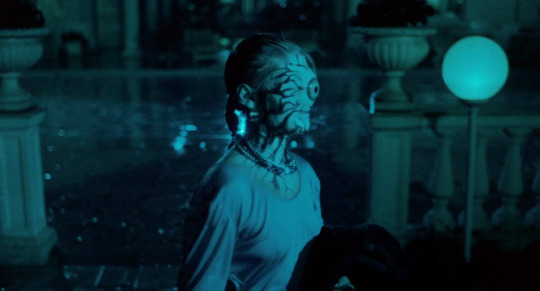
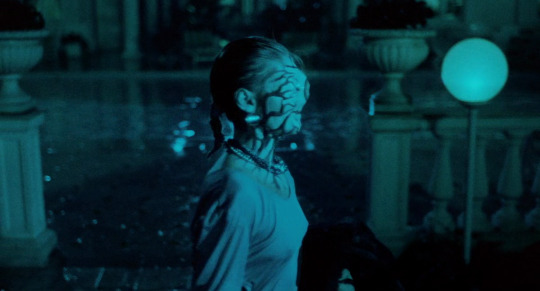


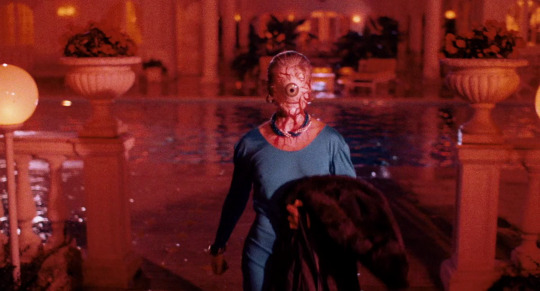

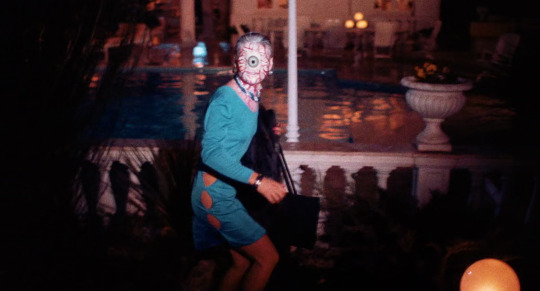
#le foto di gioia#horror#grindhouse#delirium#cult film#lamberto bava#80s#cult horror#trippy#creepy#horror movies#gothic#80s horror#italian horror#eyeball#monster#80s movies#italian cinema#wtf
53 notes
·
View notes
Photo

Nuovo post su https://is.gd/ce8lDz
Nell’epopea degli “ppoppiti”, la ricerca dell’identità salentina,
Giorgio Cretì
Poppiti (Il Rosone, 1996) è un romanzo moderno che ha sapore d’antico.
Ne è autore Giorgio Cretì (1933-2003), scrittore salentino, nato a Ortelle, in provincia di Lecce, ma trasferitosi presto a Pavia. Autore di vari racconti pubblicati su “Il Rosone”, la rivista dei pugliesi di Milano, e su altri periodici, Cretì, membro dell’Associazione Stampa Agroalimentare, ha dedicato i propri interessi di studio prevalentemente al settore della gastronomia e della cucina, dando alle stampe pregevoli testi come: Erbe e malerbe in cucina (Sipiel, 1987), il Glossario dei termini gastronomici, compresi i vocaboli dialettali, stranieri e gergali, annesso al volume I grandi menu della tradizione gastronomica italiana (Idea Libri, 1998), Il Peperoncino (Idea Libri, 1999), La Cucina del Sud (Capone Editore, 2000), A tavola con don Camillo e Peppone (Idea Libri, 2000), La Cucina del Salento (Capone, 2002), ed altri.
Il romanzo narra una storia d’amore che si volge nella campagna salentina, a Masseria Capriglia, fra Santa Cesarea Terme e Vignacastrisi, dove vivono i protagonisti del racconto, Poppiti appunto (o, nelle varianti Ppoppiti, con rafforzamento della lettera iniziale, o ancora Ppoppeti).
Varie le etimologie di questo termine gergale, ma la più accreditata è quella che lo fa risalire al latino post oppidum, ossia “fuori dalle mura del borgo”, ad indicare nell’antica Roma coloro che abitavano fuori dalle mura fortificate della città, dunque i contadini.
Questo termine è passato ad indicare la gente del Salento e in particolare dell’area più meridionale, ovvero di un territorio caratterizzato fino a cinquant’anni da un paesaggio prevalentemente agricolo e dominato dalla civiltà contadina.
ph Giorgio Cretì
La storia si svolge all’inizio del secolo Novecento e gli umili contadini del racconto sono Ia e Pasquale, il quale è chiamato alla guerra di Libia del 1911 ed è così costretto a lasciare soli la moglie ed il bimbo appena nato. L’assenza di Pasquale si protrae a lungo perché in guerra egli viene fatto prigioniero. Quando ritorna nel Salento, con grandi progetti per la sua famiglia, Pasquale non trova però la situazione ideale che aveva immaginato ma anzi incombe sulla Masseria Capriglia una grave tragedia.
Del romanzo è stato tratto un adattamento teatrale dalla compagnia “Ora in scena”, per i testi della scrittrice Raffaella Verdesca e la regia dello studioso Paolo Rausa. La rappresentazione teatrale è stata portata in vari teatri e contesti culturali a partire dal 2013 con un discreto apprezzamento di critica e di pubblico. In particolare, fra il maggio ed il giugno del 2014, ad Ortelle, città natale dello scrittore, nell’ambito della manifestazione “Omaggio a Giorgio Cretì”, venne allestita in Piazza San Giorgio, la mostra di pittura Ortelle. Paesaggi Personaggi … con gli occhi (e il cuore) di Carlo Casciaro e Antonio Chiarello, presso Palazzo Rizzelli. Ortelle commemorava così un suo figlio illustre, con una serie di incontri e conferenze e con la messa in scena dello spettacolo teatrale, a cura di Raffaella Verdesca e Paolo Rausa. Le parole del romanzo di un cultore di storia patria si intrecciavano ai colori e alle immagini di due artisti del pennello, anch’essi ortellesi. La mostra pittorica di Casciaro e Chiarello ha portato alla pubblicazione di un catalogo dallo stesso titolo della mostra, con doppia speculare copertina, realizzato con il patrocinio del Comune di Ortelle, dell’Università del Salento, del CUIS e della Fondazione Terra D’Otranto.
Sulla copertina, in una banda marrone nella parte superiore, si trova scritto: “Per un antico (pòppitu) eroe. Omaggio a Giorgio Cretì”. Nella parte centrale, la foto di un bellissimo antico portale del centro storico di Ortelle. All’interno del volumetto, Casciaro e Chiarello si dividono equamente gli spazi: da un lato le opere dell’uno e dal lato opposto quelle dell’altro, realizzando una sorta di residenza artistica o casa dell’arte su carta. Il catalogo è introdotto da una bellissima poesia di Agostino Casciaro, dedicata proprio ad Ortelle e da una Presentazione della critica d’arte Marina Pizzarelli.
uno dei dipinti di Carlo Casciaro
Quindi troviamo i volti di Carlo Casciaro, fra i quali il primo è proprio quello dello Pòppitu Cretì, in un acrilico su tela del 2014; poi quello di Agostino Casciaro, tecnica mista 2014, e quello del pittore Giuseppe Casciaro (1861-1941), ch’è forse la maggior gloria ortellese, pittore di scuola napoletana, del quale Carlo è pronipote. Inoltre, l’opera Ortelle, acrilico su tela 2012, con una citazione di Franco Arminio; Capriglia, acrilico su tela 2014, con una citazione dal romanzo di Cretì; Largo Casciaro, acrilico su tela 2013, e infine una scheda biografica di Carlo Casciaro. Di Carlo ho già avuto modo di scrivere che dalla fotografia alla pittura, egli comunica attraverso la sua arte totale. (Paolo Vincenti, L’arte di Carlo Casciaro in “Il Galatino”, 14 giugno 2013).
Laureato all’Accademia di Belle Arti di Lecce, ha vissuto a lungo a Milano prima di ritornare nel borgo avito e qui ripiantare radici. L’oggetto privilegiato della sua pittura è il paesaggio salentino. Il suo è un naturalismo che richiama quello dei più grandi maestri, come Vincenzo Ciardo. È un paesaggismo delicato, fuori dal convenzionale, dal naif. Nelle sue tele, dai vivaci colori, in cui vengono quasi sezionati i reticolati urbani dei nostri paesini, più spesso le aree della socialità come le piazze, gli slarghi, le corti, si ammirano animali quali pecore, buoi, galline, gazze, convivere in perfetta armonia con oggetti e persone, in un’epoca ormai lontana, fatta di ristrettezze e di fatica, quella della civiltà contadina del passato. Il segno colore di Casciaro dà ai suoi paesaggi un’immagine di gioia temperata, di una serenità appena percepita, cioè non un idillio a tutto tondo, tanto che il cielo incombente sulle scene di vita quotidiana sembra minaccioso e il sole non si mostra quasi mai.
Nel microcosmo di una piccola e fresca cantina nella quale ha ricavato il suo studio, oggi Carlo fotografa vecchi e vecchine, parenti, amici, personaggi schietti e spontanei di quella galleria di tipi umani che offre la sua comunità, li immortala nei suoi ritratti a matita e pastello e li appende con le mollette a dei fili stesi nella cantina a suggellare arte e vita, sogno e contingenza. Una delle sue ultime realizzazioni infatti è Volti della Puteca Disegni-Foto-Eventi, Minervino Ortelle Lecce 2016 (Zages Poggiardo, 2017).
Mutando verso del catalogo, si ripetono la poesia di Agostino Casciaro e la Presentazione di Pizzarelli, e poi troviamo le opere di Antonio Chiarello. Fra i versi di Antonio Verri e Vittorio Bodini, sette acquerelli con una piantina turistica di Ortelle, cartoline e vedute panoramiche della città di San Vito e di Santa Marina e una Vecchia porta + vetrofania, L’uscio dell’orto (…e lucean le stelle), tecnica mista del 2011. Quindi, la scheda biografica di Antonio Chiarello. Anche di Antonio, fra le altre cose, ebbi a scrivere che egli, laureato all’Accademia di Belle Arti di Lecce, utilizza, per le sue Pittoriche visioni del Salento, le tecniche più svariate con una certa predilezione per l’acquerello. (Paolo Vincenti, Da Sant’Antonio ad Antonio Chiarello in “Il Paese Nuovo”, 18 giugno 2011).
Nel 2005 Chiarello ha realizzato per la prima volta la mostra devozionale “San’Antonio giglio giocondo…”, con “tredici carte devozionali” dedicate al suo santo onomastico ed ha portato questo progetto- ex voto in giro per la provincia di Lecce in tutti i paesi dove vi sia il protettorato o almeno una devozione per il santo. Visceralmente legato alla patria salentina, Chiarello ne ha dipinto le grotte, i millenari monumenti, gli alberi, i suoi borghi incantati, le bellezze di Castro e di Porto Badisco, di Santa Cesarea e di Otranto, di Muro Leccese, di Poggiardo e di tutta la costa adriatica leucadense.
Autore anche di svariate realizzazioni grafiche e di manifesti, nella sua avventura umana ed artistica, ha interagito con amici quali Antonio Verri, Pasquale Pitardi, Donato Valli, Antonio Errico, Fernando Bevilacqua, Rina Durante. All’epopea degli ppoppiti, Chiarello e Casciaro confessano di sentirsi intimamente vicini per cultura, formazione e scelta sentimentale.
Ecco allora, nell’ideale ricerca di un’identità salentina, la pittura dei due artisti poppiti salentini intrecciarsi, in fertile connubio, con la scrittura di uno poppitu di ritorno quale Giorgio Cretì.
Nell’epopea degli “ppoppiti”, la ricerca dell’identità salentina, in Identità Salentina 2020, Salento Quale identità quale futuro? Contributi e testimonianze per la cultura e il governo del territorio, Italia Nostra sezione Sud Salento, a cura di Marcello Seclì, Collepasso, Tip. Aluisi, 2021
Su Giorgio Cretì vedi:
Giorgio Cretì – Fondazione Terra D’Otranto (fondazioneterradotranto.it)
L’omaggio di Ortelle a Giorgio Cretì con la presentazione del volume antologico delle opere – Fondazione Terra D’Otranto (fondazioneterradotranto.it)
Giorgio Cretì come uno sciamano – Fondazione Terra D’Otranto (fondazioneterradotranto.it)
Storia di guerra e passione nel Salento rurale – Fondazione Terra D’Otranto (fondazioneterradotranto.it)
#Antonio Chiarello#Carlo Casciaro#Giorgio Cretì#Ortelle#Paolo Vincenti#Pòppiti#Arte e Artisti di Terra d'Otranto#Libri Di Puglia#Spigolature Salentine#Tradizioni Popolari di Terra d’Otranto
1 note
·
View note
Photo

Delirium (Le foto di Gioia) 1987
1 note
·
View note
Text
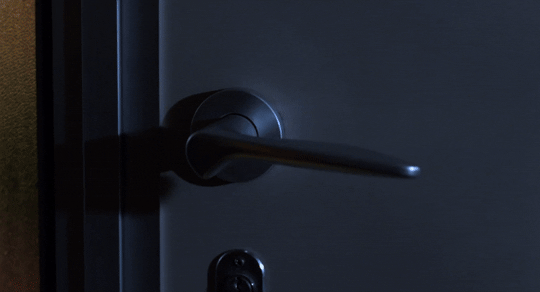
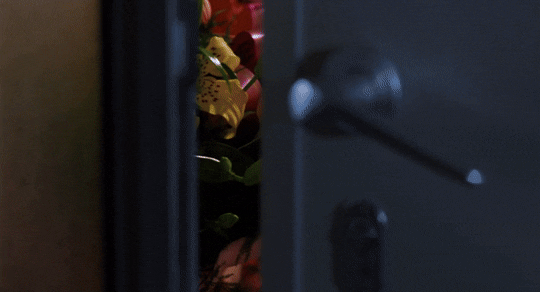
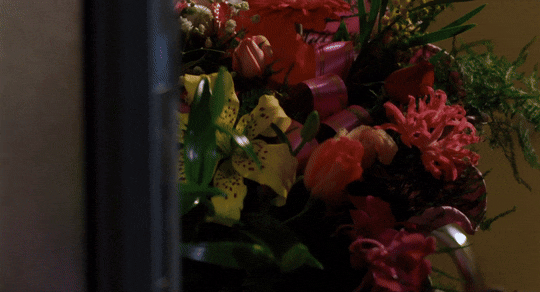
Le foto di Gioia (1987)
7 notes
·
View notes
Photo

Le foto di Gioia, Lamberto Bava (1987)
Cinematography: Gianlorenzo Battaglia | Italy
1 note
·
View note
Text










Happy Birthday/ Buon Compleanno
Alle sola e Unica... Daria Nicolodi
(Firenze, 19 giugno 1950)
(In 🇮🇹 & 🇬🇧 language)
attrice e sceneggiatrice italiana, in particolare di film di genere thriller e horror girati negli anni del sodalizio sentimentale e artistico con il regista Dario Argento.
Nel 1970 partecipò al varietà televisivo in quattro puntate Babau, scritto da Paolo Poli e Ida Omboni e diretto da Vito Molinari, programma che a causa dei contenuti all'epoca ritenuti oltraggiosi venne "archiviato" dalla RAI-TV e trasmesso solo sei anni dopo
Nei primi anni settanta ebbe alcune significative esperienze cinematografiche e teatrali sotto la guida di Elio Petri come La proprietà non è più un furto (1973) e di Carmelo Bene come Salomè (1972). Di quegli anni anche un vinile in formato 45 giri.
Sempre negli stessi anni, partecipò ad alcune produzioni televisive, quali i film a puntate I Nicotera, Senza lasciare traccia con Rossano Brazzi Ritratto di donna velata, con Nino Castelnuovo (1975), lo sceneggiato Saturnino Farandola, con Mariano Rigillo (1978), Rosaura alle 10 (1981) ed il film La Venere d'Ille, ultima opera di Mario Bava (1978).
Aspetto decisivo della vita e della carriera di Daria è rappresentato dalla relazione sentimentale e professionale con il regista Dario Argento - authorized page che l'attrice conobbe nel 1974 durante il casting per il film Profondo rosso (film 1975)
Dalla loro relazione nacque, nel 1975, la figlia Asia Argento
La Nicolodi partecipò, come attrice o sceneggiatrice, a tutti i film diretti dal regista romano dal 1975 al 1987: Profondo rosso (1975), Suspiria 1977 Inferno (1980) Ténèbres (film, 1982) Phenomena (1984) Terreur à l'opéra (film, 1987) Particolarmente efficace la sua interpretazione della giornalista Gianna Brezzi nel capolavoro di Argento Profondo rosso, in cui la Nicolodi tratteggia con originalità un personaggio femminile del tutto atipico per il cinema italiano dell'epoca.
Co-sceneggiatrice di Suspiria e, a quanto lei stessa dichiara, di Inferno.
nei successivi film di Argento la Nicolodi recitò in Opera, distinguendosi maggiormente in Tenebre e, soprattutto, Phenomena, in un ruolo che non amò tuttavia particolarmente, criticando il carattere, per certi versi "reazionario", della parte assegnatale da Argento.
Terminata la sua relazione con Argento nel 1985, partecipò saltuariamente a qualche film thriller/horror (Le foto di Gioia Paganini Horror La Setta), sfruttando la sua aura di dark lady del cinema di genere, nonché ad alcuni film d'autore (Maccheroni, La fine è nota, La parola amore esiste).
In ��🇧
Daria Nicolodi (born 19 June 1950) is an Italian actress and screenwriter.
In 1970 she participated in the television variety show Babau in four episodes, written by Paolo Poli and Ida Omboni and directed by Vito Molinari. Because of program content deemed outrageous at the time, the show was "archived" and only broadcast by RAI six years later. In the early 1970s Nicolodi had some significant work in the cinema and theater under the guidance of Elio Petri. Also in the same year, Nicolodi participated in some TV productions, such as the serial story Nicotera, Without a Trace with Rossano Brazzi (1972), Portrait of a Veiled Woman with Nino Castelnuovo (1975), the drama Saturnino Farandola with Mariano Rigillo (1978), and Rosaura at 10 (1981).
Daria Nicolodi starred in five films directed by Dario Argento between 1975 and 1987: Deep Red (1975), Inferno (1980), Tenebrae (1982), Phenomena (1985), and Opera (1987). She also has a co-writing credit on Suspiria. Notably, Nicolodi starred in Shock, the final film of Italian horror auteur Mario Bava. After her relationship with Argento ended in 1985, Nicolodi participated in a few occasional thriller/horror films (Paganini Horror, The Picture of Joy), exploiting her aura of dark lady of the genre in some films (Macaroni, The End Is Known, Notes of Love), and in recent years, movies directed by her daughter Asia Argento
In 2007, Nicolodi made a comeback to the cinema, working with her daughter Asia in Argento's The Mother of Tears, the thematic sequel to both Suspiria and Inferno.
Daria had a professional and romantic relationship with director Dario Argento; they met in 1974 during casting for the film Deep Red, and their daughter Asia Argento was born in 1975. They separated in 1985.
#daria nicolodi#attrice italiana#attrice#italian actress#actrees#profondo rosso#deep red#suspiria 1977#suspiria#tenebre#tenebres#phenomena#inferno#inferno 1980#le foto di gioia#mario bava#dario argento movie#dario argento#darioargento#giallo fever#giallofever#italian giallo#italian cult#cult#gialli#cinema cult#giallo#italian sexy comedy#international cult
40 notes
·
View notes
Photo









Daria Nicolodi - (19/06/1950 -)
Local de Nascimento: Florença (Itália)
Atriz e roteirista
Filmes: Daria Nicolodi é uma das maiores divas do cinema de terror italiano. Musa do diretor Dario Argento (com quem se relacionou por 11 anos), a atriz participou de todos os filmes do diretor entre 1975 e 2007: Prelúdio Para Matar (Profondo rosso/1975), Suspiria (1977), A Mansão do Inferno (Inferno/1980), Tenebre (1982), Phenomena (1985), Terror na Ópera (Opera/1987), e O Retorno da Maldição: A Mãe das Lágrimas (La terza madre/ 2007). Daria também co-roterizou o filme Suspiria, e ajudou Argento a criar a história de A Mansão do Inferno.
Ainda no cinema, em 1977, Daria interpretou Dora no longa-metragem Shock, trabalhando com o lendário Mario Bava. Em 1979, Nicolodi estrelou na televisão italiana a série de seis episódios I giochi del diavolo, que conta a trajetória de cinco pessoas influenciadas pelo demônio. Em 1987, Daria foi uma das protagonistas do giallo Le foto di Gioia (o qual também é conhecido como Delirium), dirigido por Lamberto Bava.
Em 1987, a atriz participou do projeto produzido por Dario Argento para a televisão, chamado Turno di notte. A série mostrava histórias que aconteciam com taxistas durante o período noturno.
Em 1989, Nicolodi foi uma das estrelas do filme Paganini Horror, dirigido por Luigi Cozzi. Em 1991, a atriz estrelou o filme A Filha do Demônio (La Setta/1991). Em 1999, Daria participou da série italiana de terror Alta Tensione.
4 notes
·
View notes
Photo

Le foto di Gioia (1987)
#Le foto di Gioia#Delirium#Lamberto Bava#bee#bees#Horror Movies#horror#thriller#Mystery#surreal#surrealism#grindhouse#bee head#hallucination#spaghetti horror#cinema#film#movie#gif#my gifs#my gif#cult films
62 notes
·
View notes
Text
È morto fr. Marciano Morra, storico segretario dei Gruppi di preghiera di Padre Pio
È morto all’età di 91 anni fr. Marciano da Monteleone di Puglia (al secolo Ferdinando Morra). Come guardiano del Convento garganico e rettore del santuario di Santa Maria delle Grazie, il 23 maggio 1987 aveva accolto Papa Giovanni Paolo II in visita pastorale a San Giovanni Rotondo e, il 5 settembre dello stesso anno, Madre Teresa di Calcutta. Come segretario generale dei Gruppi di Preghiera di Padre Pio, incarico che ha ricoperto per 18 anni (dal 1995 al 2013), nel 2002 aveva incontrato a Buenos Aires il cardinale Jorge Mario Bergoglio, desideroso di conoscere meglio la figura del Santo cappuccino.

Scritto da Stefano Campanella -17 Gennaio 2021
È morto oggi, all’età di 91 anni, fr. Marciano da Monteleone di Puglia (al secolo Ferdinando Morra), una delle figure più eminenti della Provincia religiosa di Sant’Angelo e Padre Pio dei Frati Minori Cappuccini: commendatore (Ordine al Merito) della Repubblica Italiana dal dicembre 1994, su proposta della Presidenza del Consiglio dei Ministri, aveva superato i 66 anni di sacerdozio ed aveva avuto il privilegio di vivere, sebbene per brevi periodi, nel convento di San Giovanni Rotondo con Padre Pio: dopo averlo conosciuto, custodire la sua eredità era diventata per fr. Marciano una missione, svolta attraverso le numerose pubblicazioni da lui scritte sulla vita e la spiritualità del santo Confratello, ma anche con il suo infaticabile apostolato in giro per l’Italia ed il mondo e attraverso i mezzi di comunicazione. Come guardiano del Convento garganico e rettore del santuario di Santa Maria delle Grazie, il 23 maggio 1987 aveva accolto Papa Giovanni Paolo II in visita pastorale a San Giovanni Rotondo e, il 5 settembre dello stesso anno, Madre Teresa di Calcutta. Come segretario generale dei Gruppi di Preghiera di Padre Pio, incarico che ha ricoperto per 18 anni (dal 1995 al 2013), nel 2002 aveva incontrato a Buenos Aires il cardinale Jorge Mario Bergoglio, desideroso di conoscere meglio la figura del Santo cappuccino.
📷Il giorno del suo 91° compleanno.
Nato il 16 febbraio 1929 a Monteleone di Puglia (FG), da Giuseppe e Margherita Morra, sentì fin dalla più tenera età una particolare attrattiva per la missione sacerdotale, come ha raccontato egli stesso in un articolo scritto per Sentiero giovane: «Da bambino […] facevo il chierichetto nella chiesa parrocchiale del mio paese e in casa giocavo a celebrare le Messe nel pianerottolo della rampa di scale che porta da un piano all’altro. All’inizio la mia attenzione si rivolse a tre congregazioni religiose: ai Chierici Regolari di San Paolo (detti “Barnabiti”), tra i quali era sacerdote un cugino di mio padre; ai Fratelli delle Scuole Cristiane (detti “Lasalliani) e ai Preti della Dottrina Cristiana (detti Dottrinari), tra i quali erano rispettivamente entrati due cugini di mia madre. Furono spedite le domande a tutte e tre le Congregazioni, ma le risposte furono tutte negative. Tutto pieno! Tutto esaurito! Altri tempi! Intanto avevo terminato la quinta elementare e lavoravo nel bar di mio padre e nel vicino spaccio del dopolavoro, entrambi a gestione familiare. Quando mio padre partì per la guerra, nei pochi mesi della sua assenza, mi fu affidata la responsabilità dello spaccio, mentre mia madre pensava a gestire il bar. La mattina, all’età di undici anni, mi dovevo svegliare alle 6,30 per trovarmi sul posto prima dell’arrivo degli autobus di linea, da cui scendevano potenziali clienti. Il primo trimestre scolastico si avviava al termine, quando giunse al mio paese, Monteleone di Puglia, in provincia di Foggia, un frate cappuccino per predicare la novena dell’Immacolata. […] Ogni sera, con papà, mamma e le mie sorelle andavamo a sentire la predica. Ricordo che guardavo fisso il predicatore, anche se non capivo granché. Comunque gli esempi che utilizzava mi colpivano e mi rimanevano impressi. Ogni sera, al termine della novena, tornavamo a casa e, mentre mia madre preparava la cena, io mi chiudevo nella cameretta, salivo su un banchetto e, gesticolando, cercavo di ripetere quelle frasi che mi erano rimaste in mente della predica. Quel predicatore, padre Arcangelo Perrotti, mi aveva stregato. Dissi subito ai miei: “Voglio farmi frate cappuccino, predicatore”». Due obiettivi che fr. Marciano raggiunse, superando le sue aspettative. Infatti come frate cappuccino è giunto a ricoprire la carica di ministro provinciale facente funzioni, quando da vicario prese in mano le redini della Provincia religiosa (dall’8 marzo del 1984 al 17 gennaio 1985) dopo l’improvvisa morte del ministro fr. Pietro Tartaglia. Come predicatore è arrivato a svolgere il compito di segretario nazionale dei predicatori cappuccini e di segretario nazionale per l’Evangelizzazione.
📷Fr. Marciano in una recente foto con Mogol.
Un ruolo determinante, nell’accogliere la chiamata del Signore da parte del piccolo Ferdinando, è stato svolto dai genitori, come ha spiegato egli stesso: «Entrambi ne furono contenti. Con mio padre mi recai subito alla casa dell’arciprete, don Rocchino Paglia, che ci presentò a padre Arcangelo. Quest’ultimo ci ascoltò con entusiasmo e ci assicurò che, una volta rientrato a Sant’Elia a Pianisi, avrebbe convinto i vari professori a tenermi delle lezioni suppletive per colmare il vuoto formativo che avevo accumulato nel primo trimestre. Il 13 gennaio, accompagnato da mio padre, a bordo di un carretto trainato da due cavalli, partii per il seminario di Sant’Elia a Pianisi, in provincia di Campobasso».
Il 15 settembre 1946 vestì l’abito religioso e il 16 settembre dell’anno seguente emise la professione temporanea dei voti, che confermò per tutta la vita l’8 dicembre 1950.
📷
Al termine del periodo formativo, prima dell’ultimo traguardo, ancora una volta fu importante il ruolo di papà Giuseppe Vito, che consentì a fr. Marciano di sentirsi completamente libero nella scelta definitiva. Il genitore andò a trovarlo e gli disse: «Manca meno di un anno per la tua ordinazione sacerdotale. Sappi che, se ti farai ordinare sacerdote, sarà la gioia più grande che mi puoi dare. Però, se vuoi tornare indietro, troverai la porta sempre aperta e ti aiuterò intraprendere l’attività che tu vorrai». «Io – ha raccontato successivamente il diretto interessato – liberamente scelsi di essere sacerdote di Cristo e ringrazierò in eterno per questo dono grandioso di Dio».
Con questa granitica certezza, il 21 febbraio 1954, accolse l’imposizione sul suo capo delle mani dell’arcivescovo di Campobasso, mons. Alberto Caringi. Insieme a lui furono ordinati altri dieci suoi confratelli e compagni di studio, tra i quali fr. Gerardo Di Flumeri, che avrebbe svolto l’importante compito di vice postulatore della Causa di beatificazione e canonizzazione di Padre Pio.
📷Fr. Marciano con il presidente dell’Ordine nazionale dei giornalisti, Carlo Verna.
I primi incarichi, svolti da fr. Marciano come sacerdote cappuccino, sono stati nel campo della formazione iniziale: prima come vice direttore del ginnasio inferiore nel convento di San Severo (anno scolastico 1954-1955), poi come direttore del seminario di Vico del Gargano (1955-1973), infine come maestro dei novizi a Morcone (1973-1974). Quindi è cominciato il ministero della predicazione che, per lunghi periodi, è coinciso con i compiti di governo nel Definitorio provinciale, con la responsabilità della Fraternità e del Santuario di San Giovanni Rotondo e con l’impegno di segretario generale dei Gruppi di Preghiera di Padre Pio.
📷Il giovane fr. Marciano con Padre Pio.
Fr. Marciano conobbe Padre Pio durante una gita a San Giovanni Rotondo, organizzata per gli studenti al termine del ginnasio, prima di iniziare il noviziato. Il ricordo di quei giorni è rimasto per lui indelebile per tutta la vita: «Di Padre Pio l’impressione che ebbi fu di un papà ma, ancor di più, di un nonno. Un giorno egli si intratteneva con noi, quando si trovò a passare l’economo del convento, al quale il Confratello stigmatizzato, riferendosi a noi fratini, disse: “Mi raccomando, falli mangiare bene, perché questa è carne che cresce”. Infatti, solo da qualche anno era terminata la guerra e non si “guazzava” nell’abbondanza».
📷Fr. Marciano con Luca Sardella.
Tra gli episodi che lo hanno legato al Santo, il Cappuccino di Monteleone raccontava spesso la guarigione di suo padre, che andò a trovare il figlio a San Giovanni Rotondo dopo essere stato dimesso dall’ospedale senza grandi speranze: «Aveva un tumore ai polmoni e i medici gli avevano dato poco da vivere. Padre Pio lo guardò fisso, poi lo prese per il bavero della giacca e con l’altra mano iniziò a tirargli dei pugni sul petto dicendo: E chi te l’ha detto che tu stai malato? Tu stai bene! Stai bene!”. E subito dopo: “Ora ti saluto. Arrivederci!” Disse proprio così: “Arrivederci”. Non capii subito cosa volesse dire, ma lo compresi in seguito. Il mio papà aveva i giorni contati e invece guarì e incontrò ancora Padre Pio. Ci lasciò quindici anni dopo per un’altra malattia».
📷Fr. Marciano con il prof. Antonio Cisternino.
Da oltre cinque anni fr. Marciano era in cura per una grave forma di leucemia, che però non aveva interrotto la continuità del suo apostolato. Anche dopo il riacutizzarsi della malattia, che a settembre del 2019 lo costrinse a un ulteriore periodo di inattività per la necessità di un ricovero in Casa Sollievo della Sofferenza, appena le condizioni fisiche glielo hanno permesso, è tornato a celebrare la Messa pubblicamente, a occupare quotidianamente il suo posto in confessionale, a garantire le sue catechesi ai telespettatori di Padre Pio Tv, a sedersi alla sua scrivania con l’obiettivo di terminare a scrivere il suo ultimo libro e, trascurando le raccomandazioni dei medici, ad accettare, quando se la sentiva, qualche giorno di predicazione fuori dal convento. Infine è tornato ad essere disponibile ad ascoltare e a offrire una parola di conforto a quanti si rivolgevano a lui: di giorno nell’incontro personale, di sera, dopo cena, telefonicamente. A bloccare l’instancabile cappuccino di Monteleone è stato il coronavirus, che lo ha costretto a ulteriori due ricoveri in ospedale e a un periodo di convalescenza e di riabilitazione nel presidio residenziale “Gli Angeli di Padre Pio”. Nonostante la guarigione dal covid, il suo corpo ha subito un progressivo decadimento, che le cure mediche prestate in un terzo ricovero non sono riuscite ad arginare.
📷
Sarà possibile rendere omaggio alla salma di fr. Marciano a partire dalle ore 17,00 di oggi presso la chiesetta antica di Santa Maria delle Grazie, con ingresso contingentato per evitare assembramenti. I funerali saranno celebrati domani, alle ore 11,30, nel santuario di Santa Maria delle Grazie e saranno trasmessi in diretta su Padre Pio Tv.
0 notes






